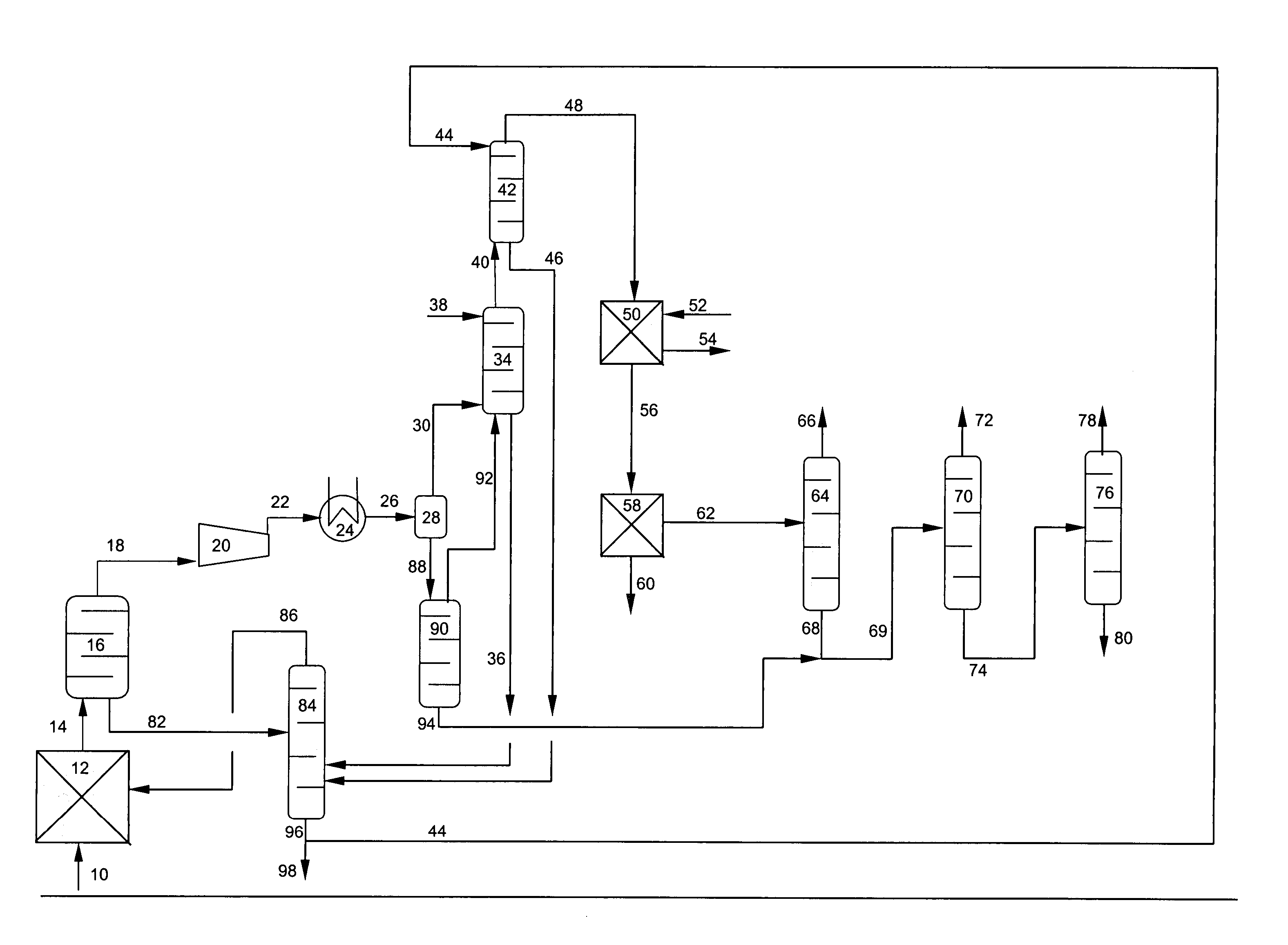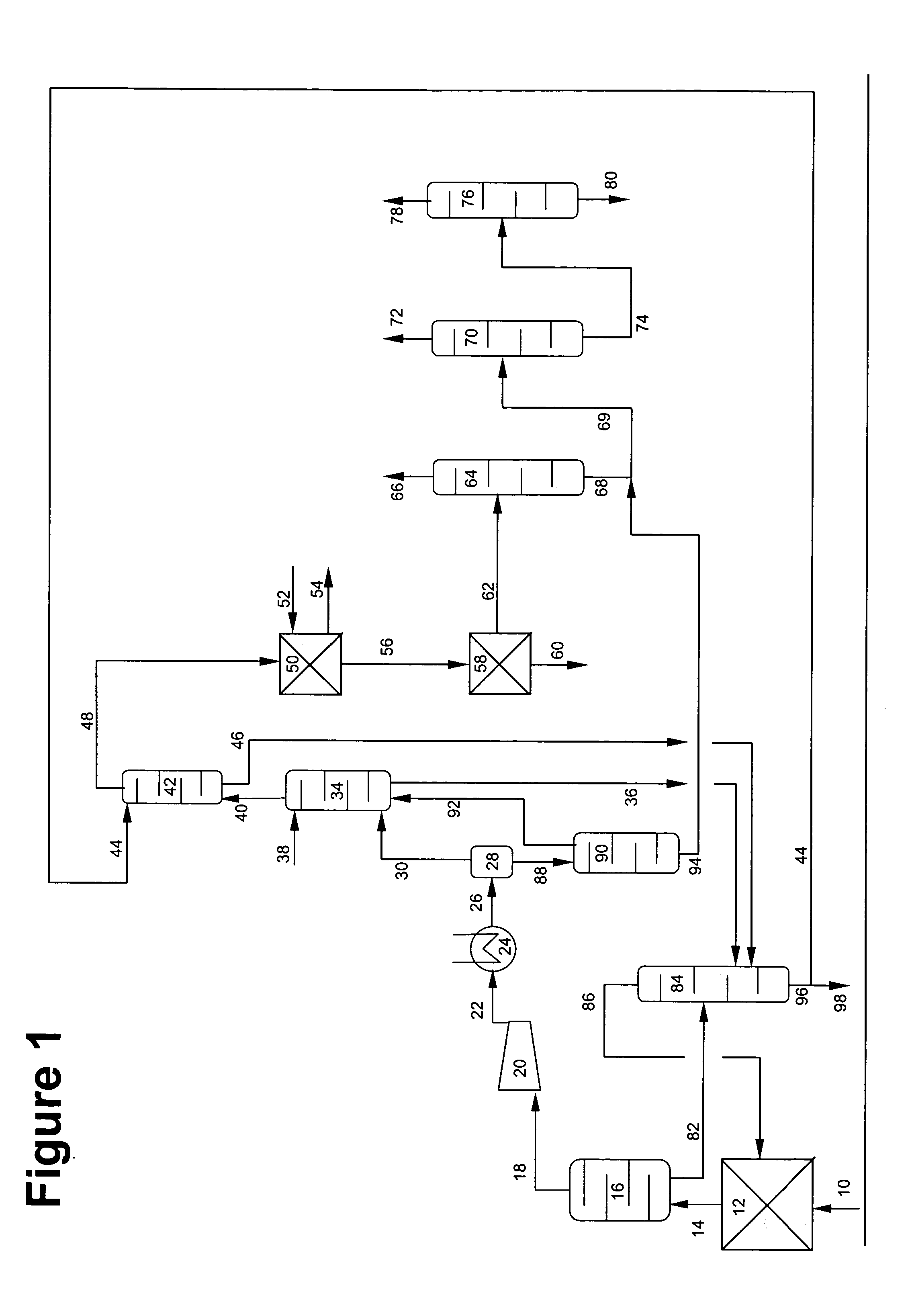Process for producing olefins
a technology of olefins and process steps, applied in the direction of organic chemistry, chemistry apparatus and processes, absorption purification/separation, etc., can solve problems such as problems in olefin recovery operations
- Summary
- Abstract
- Description
- Claims
- Application Information
AI Technical Summary
Benefits of technology
Problems solved by technology
Method used
Image
Examples
example
[0117] A pilot plant trial of the process shown in FIG. 1 was conducted in which the second effluent stream was washed in the fractional distillation tower 28 at a pressure of 150 psig (1135 kPa) and a methanol flow rate of 15 lb / hour. The composition of the second effluent stream and the methanol-washed third effluent stream are shown below in Table 1.
TABLE 1SecondEffluentThird EffluentComponentStream (wt %)Stream (wt %)% ChangeDimethyl ether3.76612.7718−26.4015Methyl ethyl ether0.01010.0000−100.0000Methyl isopropyl ether0.00070.0000−100.0000Acetaldehyde0.04170.0378−9.53622-Methoxy butane0.00020.0000−100.0000Propanal0.01110.0000−100.0000Acrolein0.00010.0000−100.0000Methacrolein0.00360.0000−100.0000Unknown0.00030.0000−100.0000Butanal0.00320.0000−100.0000Methyl acetate0.00020.0000−100.0000Methanol2.73532.3179−15.2629Acetone0.16010.0813−49.2466Isovaleraldehyde0.00030.0000−100.0000Dimethylacetal0.00200.0000−100.0000Pentanal0.00050.0000−100.00002-Butanone0.03750.0000−100.0000Ethanol0....
PUM
| Property | Measurement | Unit |
|---|---|---|
| Temperature | aaaaa | aaaaa |
| Temperature | aaaaa | aaaaa |
| Temperature | aaaaa | aaaaa |
Abstract
Description
Claims
Application Information
 Login to View More
Login to View More - R&D
- Intellectual Property
- Life Sciences
- Materials
- Tech Scout
- Unparalleled Data Quality
- Higher Quality Content
- 60% Fewer Hallucinations
Browse by: Latest US Patents, China's latest patents, Technical Efficacy Thesaurus, Application Domain, Technology Topic, Popular Technical Reports.
© 2025 PatSnap. All rights reserved.Legal|Privacy policy|Modern Slavery Act Transparency Statement|Sitemap|About US| Contact US: help@patsnap.com


